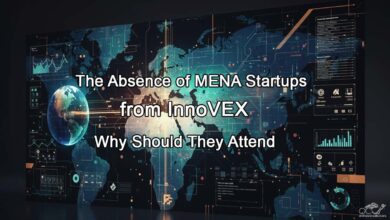The global tech landscape has entered an unprecedented race for dominance in the field of artificial intelligence, a race unlike any seen before in scale, speed, and ambition. From semiconductor giants to software powerhouses and AI model developers, every major player is vying for a front-row seat in what is widely regarded as the next industrial revolution, one that could reshape the world economy within a decade.
At the center of this frenzy stands OpenAI, led by Sam Altman, which recently set off a chain of events that disrupted the balance of power across the semiconductor industry.
After years of relying almost entirely on NVIDIA’s infrastructure to power its models such as GPT, DALL·E, and Sora, OpenAI made headlines in October 2025 by announcing two historic partnerships, one with AMD and another, even larger, with NVIDIA itself. Together, these deals aim to secure tens of gigawatts of computing power to train the next generations of advanced AI systems.
These announcements come amid intensifying competition, as rivals such as Anthropic, Google DeepMind, xAI, and Meta rush to scale their own large models. It has become clear that computational power is now the ultimate currency of innovation, whoever controls the most compute will control the future of AI.
However, this feverish expansion has raised serious concerns among investors and economists.
Are these massive deals a sign of sustainable, long-term strategy, or are we witnessing an inflated cycle of market overvaluation, reminiscent of the dot-com bubble that burst in 2000?
The numbers alone are staggering.
Hundreds of billions of dollars are being poured into projects that have yet to generate meaningful profit, while semiconductor stocks surge to record highs. Many of these agreements even rely on complex financial instruments, such as stock warrants, rather than actual cash flow.
To some, this marks the dawn of a new technological era, the true rise of the Fourth Industrial Revolution. To others, it looks like a quietly inflating financial bubble, hidden beneath the glamorous promise of AI.
This article explores the bigger picture: the logic behind these monumental deals, the economic dynamics driving them, and the potential risks that could lead to a correction, or even a crash, in the years ahead.
1. The Big Deals: OpenAI’s Power Play
The OpenAI – AMD Agreement
In October 2025, OpenAI and AMD announced a landmark agreement to deploy up to 6 gigawatts of GPU capacity over the coming years.
The initial phase will begin in the second half of 2026, delivering 1 gigawatt, with OpenAI gaining the option to acquire up to 10% equity in AMD through future investments.
Notably, a large portion of this deal is financed through stock warrants, meaning its success depends heavily on AMD’s future share performance, a financial structure that has sparked debate over the realism of such optimistic valuations.
The OpenAI – NVIDIA Partnership
The second, and far larger, deal involves NVIDIA.
The two companies unveiled a partnership centered around 10 gigawatts of AI supercomputing systems built on NVIDIA’s latest Hopper and Blackwell architectures.
The total investment is estimated at around $100 billion, making it one of the largest in semiconductor history.
Analysts from Bloomberg and The Economist described this as a form of “circular value creation”, where companies boost each other’s valuations through massive announcements that are not always immediately materialized.
2. The Logic Behind the AI Arms Race
Through these deals, OpenAI aims to secure computational independence for its future technologies, especially its long-term vision for Artificial General Intelligence (AGI).
Models such as GPT-5 and GPT-Next demand staggering amounts of parallel processing, potentially involving millions of GPUs.
But achieving this scale requires enormous investments in data centers, power infrastructure, and hardware supply chains, creating the perfect conditions for speculative financial growth, and potentially, overvaluation.
3. Are We Really in an AI Bubble?
Many indicators echo the conditions that preceded the early 2000s internet crash:
- Inflated expectations: Markets treat AI as an imminent solution to every industry’s problems, overlooking limitations in energy, cost, and regulation.
- Future promises over current profit: Many AI companies generate little to no profit but are valued in the tens or hundreds of billions.
- Stock-driven financing: Like AMD’s warrant deal, some partnerships rely on rising share prices instead of actual revenue, eerily similar to 1999’s speculative financing.
- Overdependence on a single supply chain: With NVIDIA controlling over 80% of the AI GPU market, any disruption in production or energy availability could have systemic consequences.
4. Why a Total Collapse Is Unlikely
Despite the red flags, today’s AI sector rests on far sturdier foundations than the dot-com era:
- Real-world applications of AI are expanding across medicine, education, manufacturing, and design.
- Governments and Big Tech giants, including Microsoft, Amazon, and Google, are investing billions in AI infrastructure.
- AI has become a strategic national priority for multiple countries, deeply embedded in digital transformation policies.
These factors make a total collapse unlikely, though a significant market correction remains a realistic possibility.
5. Early Signs of a Slowdown
Economists have begun to detect early symptoms of AI market fatigue:
- Slowing demand growth for NVIDIA’s A100 and H100 chips due to limited power availability in data centers.
- New competitors, Intel, Tenstorrent, Graphcore, and others, entering the GPU market, which could squeeze profit margins.
- Growing regulatory pressure in the U.S. and EU over AI’s impact on privacy, data collection, and political influence.
These developments could lead investors to reassess their enthusiasm for what some now call “AI euphoria.”
6. Looking Ahead: Maturity, Not Meltdown
By 2026–2027, the AI industry may transition from hype to maturity.
Announcements will become smaller, focus will shift toward energy efficiency and profitability, and only the strongest companies, those balancing innovation with economic realism, will survive.
This will not mark the “end of the bubble”, but rather the beginning of market consolidation, where weaker players exit and sustainable leaders remain.
Conclusion: Between Innovation and Inflation
What’s happening today in the AI world goes beyond a corporate rivalry; it’s a profound restructuring of the global economic order.
The recent deals between OpenAI, NVIDIA, and AMD represent the peak of this transformation, a moment where technology, capital, and geopolitical ambition converge.
Yet beneath this progress lies a paradox: while AI is hailed as the key to human productivity and efficiency, the path toward that vision is riddled with dangers, monopoly, speculation, overvaluation, and energy strain.
Today, companies like NVIDIA and AMD effectively control the pace of technological progress. Their production capacity determines who gets to build advanced AI, and who doesn’t.
If this concentration continues, AI could become an exclusive, high-cost industry, accessible only to a handful of corporate giants, much like oil was in the early 20th century.
History teaches that every major technological revolution breeds its own bubbles, from railroads to the internet, and now AI.
The key difference this time is that AI isn’t merely a product or service; it’s an intellectual and industrial backbone spanning healthcare, education, manufacturing, media, and national security.
Any crash or correction, therefore, wouldn’t just be an economic downturn, it would be an epistemic earthquake, reshaping our relationship with technology itself.
The AI bubble hasn’t burst, yet. But the pressure inside it is mounting.
The question investors and developers should be asking isn’t “When will it burst?” but rather “How do we prevent it from bursting?”
The answer lies in striking a balance between responsible innovation and disciplined investment, between scientific imagination and economic realism.
If companies like OpenAI, NVIDIA, and AMD can turn this race from one of raw expansion into one of efficiency and sustainability, this AI revolution may become the most stable technological transformation in modern history.
Otherwise, the headlines of the early 2000s could return, with a chilling new twist:
“The AI Bubble Bursts … and the Race to Artificial General Intelligence Comes to a Halt”



